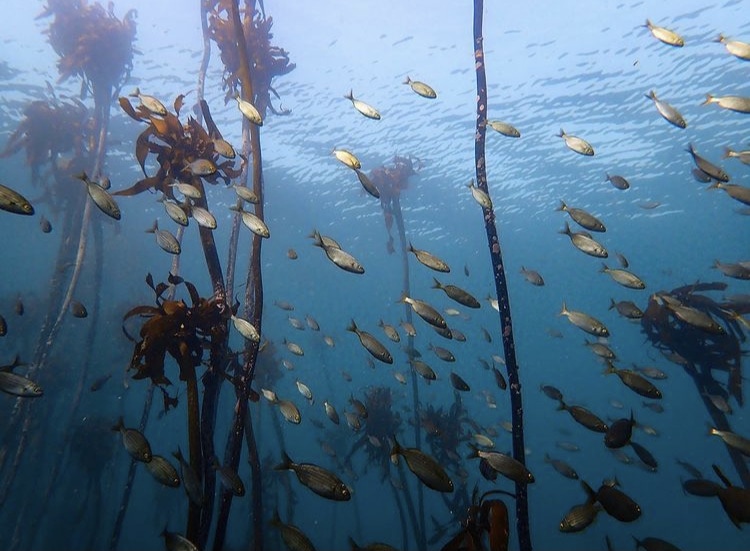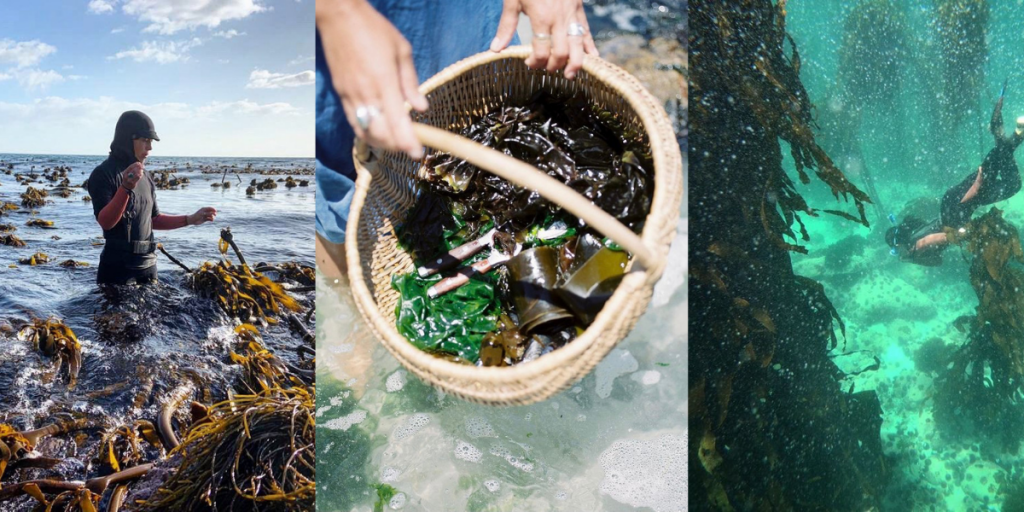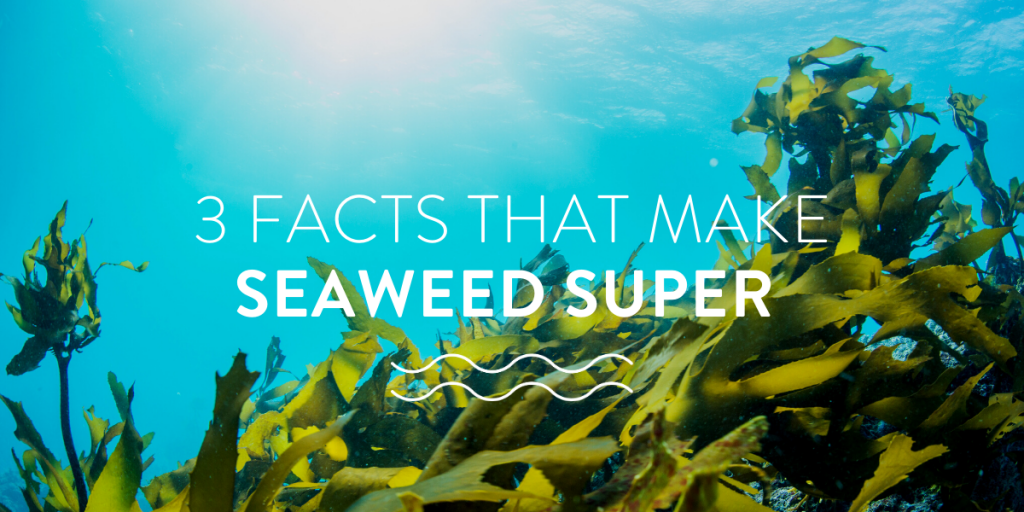Question: Why did the mermaid look the other way?
Answer: Because the seaweed.
Sorry, couldn’t kelp myself!
If you didn’t guess from the above we’re going to be talking about seaweed in this blog. Seaweed might not seem like much, but don’t be fooled! It does a lot for us and plays an important role in the health of our ocean and planet overall.
We hear a lot about coral reefs when discussing the ocean, which are amazing and vital to the health of our oceans, but it’s important we value the importance of other ecosystems too e.g. seagrass meadows and kelp forests.
Read : The Importance of Seagrass Meadows for more on another underrated ocean ecosystem.
So let’s see if these facts can help further convince you of the power of seaweed …
Firstly, what is it?
Seaweeds are not really plants. They are in fact a type of complex algae (marine macroalgae). Coming in many different varieties and sizes; the smallest are only a few centimetres in size, while the largest regularly grow to 30 – 50 meters long. There are thousands of types of seaweeds that can be classified into three major groups: brown algae (Phaeophyceae), green algae (Chlorophyta) and red algae (Rhodophyta).
The main differences between seaweed and plants are:
- Most plants only carry out photosynthesis in their leaves, whereas seaweeds can photosynthesise in all their tissues.
- Seaweeds can also absorb water and nutrients in all their tissues, directly from the surrounding water, whereas plants have a complex system of roots, specialised tissues and leaves that help them move water and nutrients.
The above points make seaweeds particularly efficient and productive.
Now, onto the facts …
1. Seaweed helps provide over 70% of our oxygen!
More specifically marine algae (e.g. phytoplankton and seaweed) produce more than 70% of the oxygen we breathe. Basically during photosynthesis these marine organisms use carbon dioxide, water and energy from the sun to make food for themselves, releasing oxygen as a byproduct.
Did you know that you can actually see (and sometimes hear) oxygen being produced by seaweed while diving too? So cool!
Recently more attention has been paid to seaweed as a carbon sink and it seems it can actually store vast amounts of carbon (unlike previously thought). In fact, kelp forests may be able to store up to 250 million tonnes of carbon per year.
Not only is seaweed helping store carbon in our oceans, but could help fight the problem on land too. Research suggests feeding cows seaweed could cut their methane emissions by over 80%. Given that agriculture alone makes up about 10% of greenhouse gas emissions world wide (with cows making up a big part of this) this could go a long way to help in the fight against climate change. Let’s hear it for slimy seaweed!

2. Seaweed provides a vital habitat for marine life
Kelp forests in particular are home to thousands of species of marine life. Many fish species use kelp forests as nurseries for their young, they provide protection from storms for seabirds and many marine mammals, like sea lions and sea otters, use them as shelter from predators.
Kelp is a form of brown algae and is benthic, which means that they fasten themselves to the seabed and grow up towards the surface and sunlight. These large seaweeds can usually be found in cooler waters around the world and form amazing underwater forests.
As well as providing food and habitats for marine life it also help stabilise the seabed and provide a coastal buffer, protecting us from coastal erosion and storms. What more could there be!?
3. Can be a great food source for us
Regardless of the fact these habitats create fisheries for us to use, it’s thought seaweed is the most nutritious food you can eat! Rich in vitamins and minerals and high in antioxidants, there are lots of health benefits to eating seaweed. Many seaweeds frequently contain more protein than meat, more iron than spinach and more calcium than milk too.
It is actually a surprising ingredient in many products, as it is often used as a binding agent in things like like ice cream, cereal, dressings and yogurt etc.
Seaweeds are also very fast growing. For example, some species of kelp can grow nearly 45cm (18 inches) a day and up to 50m long in ideal conditions, so can provide a highly sustainable food source for us in their own right too.

If you’d like to learn more check out our 2 recent ‘let’s talk’ episodes with experts in this area. One with Jhen @islandgirlfindingherway on Sargassum and one with Roushanna @veldandsea on seaweed as a food source in the IGTV section of our Insta.


